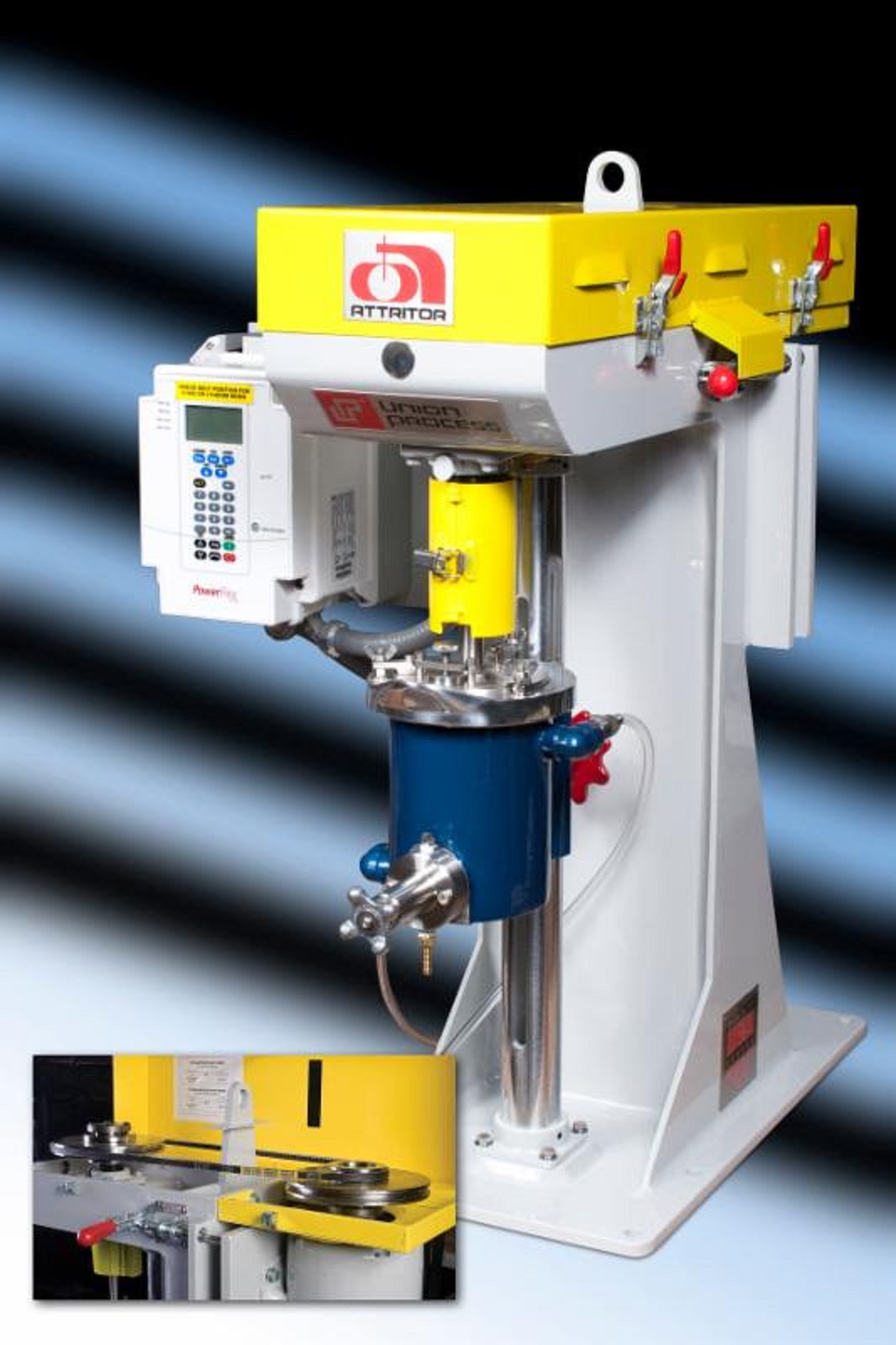
Union Process Inc, a manufacturer of particle size reduction and dispersion equipment, has introduced a combination laboratory mill which can process both fine and coarse material and/or perform multiple-stage grinding.
The Union Process HD-01/HDDM-01 combination lab Attritor uses a single motor, frame and set of controls to mill coarser material using larger grinding media (3mm to 6mm) at lower agitator shaft speeds (200-650 RPM) using the HD mode. For submicron and nanometer range target particle sizes, the mill can be operated in HDDM mode which utilizes smaller grinding media (0.25mm to 2mm) and higher agitator shaft speeds (1500-3000 RPM).
Switching between HD and HDDM mode is accomplished by releasing the hinged belt guard (equipped with quick disconnects), moving the drive belt to the appropriate set of pulleys, and re-securing the belt guard. The coupling, agitator shaft, and cover can also be changed depending upon which mode the Attritor is being operated in.
The combination mill is available with a choice of two drive systems: the electronic variable frequency drive (explosion-proof or non-explosion-proof) or the mechanical variable speed drive (explosion-proof). The HD-01/HDDM-01 combination lab Attritor can be configured with metal-free contact parts when necessary and is compatible with the full line of HD-01 and HDDM-01 interchangeable parts and accessories to maximize versatility.
‘The HD-01/HDDM-01 Attritor, when configured appropriately, can be used for dry milling, wet milling, milling under inert atmosphere and even cryogenic milling,’ said Emery Li, sales manager at Union Process.
This story is reprinted from material from Union Process, with editorial changes made by Materials Today. The views expressed in this article do not necessarily represent those of Elsevier.





